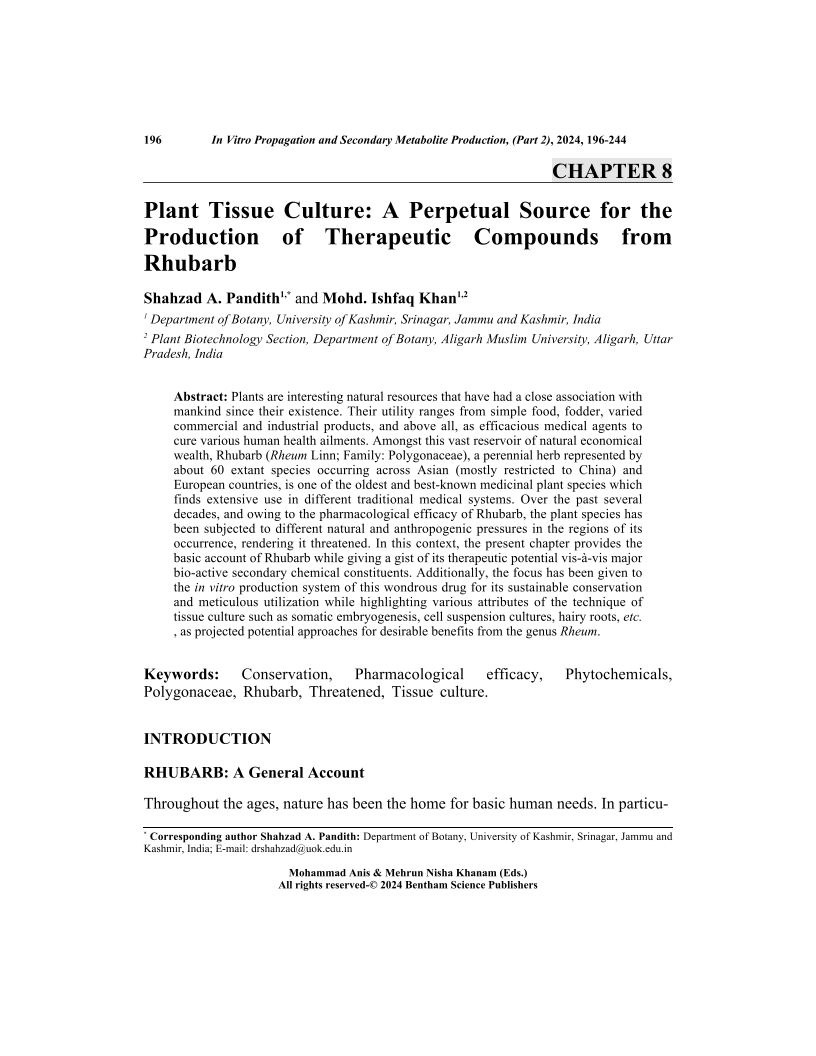- Home
- Books
- In Vitro Propagation and Secondary Metabolite Production from Medicinal Plants: Current Trends (Part 2)
- Chapter
Plant Tissue Culture: A Perpetual Source for the Production of Therapeutic Compounds from Rhubarb

- Authors: Shahzad A. Pandith1, Mohd. Ishfaq Khan2
-
View Affiliations Hide AffiliationsAffiliations: 1 Department of Botany, University of Kashmir, Srinagar, Jammu and Kashmir, India 2 Department of Botany, University of Kashmir, Srinagar, Jammu and Kashmir, India
- Source: In Vitro Propagation and Secondary Metabolite Production from Medicinal Plants: Current Trends (Part 2) , pp 196-244
- Publication Date: April 2024
- Language: English
Plant Tissue Culture: A Perpetual Source for the Production of Therapeutic Compounds from Rhubarb, Page 1 of 1
< Previous page | Next page > /docserver/preview/fulltext/9789815196351/chapter-8-1.gif
Plants are interesting natural resources that have had a close association with mankind since their existence. Their utility ranges from simple food, fodder, varied commercial and industrial products, and above all, as efficacious medical agents to cure various human health ailments. Amongst this vast reservoir of natural economical wealth, Rhubarb (Rheum Linn; Family: Polygonaceae), a perennial herb represented by about 60 extant species occurring across Asian (mostly restricted to China) and European countries, is one of the oldest and best-known medicinal plant species which finds extensive use in different traditional medical systems. Over the past several decades, and owing to the pharmacological efficacy of Rhubarb, the plant species has been subjected to different natural and anthropogenic pressures in the regions of its occurrence, rendering it threatened. In this context, the present chapter provides the basic account of Rhubarb while giving a gist of its therapeutic potential vis-à-vis major bio-active secondary chemical constituents. Additionally, the focus has been given to the in vitro production system of this wondrous drug for its sustainable conservation and meticulous utilization while highlighting various attributes of the technique of tissue culture such as somatic embryogenesis, cell suspension cultures, hairy roots, etc. , as projected potential approaches for desirable benefits from the genus Rheum.
-
From This Site
/content/books/9789815196351.chapter-8dcterms_subject,pub_keyword-contentType:Journal105

